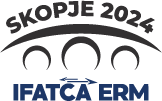A lot of places to visit, old and new; a lot of things to do, cuisine to taste, nightlife and urban day life to enjoy, cultural events to attend. Discovering North Macedonia through Skopje is an unforgettable experience.
Dotting the map with all the famous cities that decorate the top lists of European capitals, there is a surprising lack of mentioning Skopje. This mistake changes at a rapid clip though, for many tourists have witnessed a city so eclectic and amazingly entertaining, offering travellers and citizens alike a place where culture, tradition and modern mix into a perfect, unforgettable blend. The city breaths in its own distinguished rhythm, and once here tourists are able to sense the flow of the culture this capital gives birth to.
What catches the eye so quickly is probably all the diversity Skopje has to offer. The urban dynamic life, the cultural heritage, tradition passed forward in a very appealing way, the mix of old and new, urbanism and nature. Everything works, more or less in tandem, to bring a singular and unique experience. Skopje never shouts in the wind about what it has to offer. Everything is dispersed and partially secluded. You will need a city guide, or better still a desire to explore. Other cities do offer numerous vestiges of variety, wherein Skopje displays variety as its biggest pride. It is a cultural kaleidoscope run wild.
Skopje is the largest city and Capital of the Republic of North Macedonia
- Old city founded in 3rd century BC;
- Area: 571 km2
- Elevation: 240 m
- Population (2021): 526,502
- Language: Macedonian, Albanian
- National currency: Denar (MKD)
- Time zone: UTC + 1 (DST: UTC +2)
- International dialing code: +389
- Postal code: MK-1000
- Car plates: SK
- Climate: Cold semi-arid

Rebuilt after a catastrophic earthquake in 1963 the city was shaping its face rather haphazardly. The main project was delivered by Kenzo Tange, a world renowned Japanese architect, who made the plan for Hiroshima as well. Many decades later, in 2010 the project “Skopje 2014” was announced, with the main goal to give Skopje a monumental look and a through and through change. Near completion, it has visitors’ cameras snapping like never before and has defined the ever-changing city.
The variety of places of culture and tradition offers a great opportunity for discovering this city via organized or self-guided tours. Start with the most must-see Skopje landmarks: Macedonia Square, Stone Bridge, Old Bazaar, Kale Fortress, Milennium Cross.
Useful tips:
- EU Citizens don’t require visa for 90 days.
- The tap water in Skopje is drinkable in most places.
- Power outlets in North Macedonia are Type C and Type F (Type E is also compatible). Operates on a 230V supply voltage and 50Hz.
- The temperature high in October is 20°C and the low is 7°. Rain is expected about 3 to 8 days of October.

Skopje Trivia
- Skopje is the birthplace of Mother Teresa. She was born on August 26th, 1910, in a house located at the center of Skopje. Check out the Mother Teresa Memorial House
- Renaissance really originated in Skopje. The frescoes contained within St. Panteleimon at Gorno Nerezi (a village near Skopje) are not seen as static, they had the capacity to change into something more obviously human and realistic, anticipating the West’s emphasis on depicting Christ as a man of flesh and blood by some 150 years. This small 12th century Byzantine Church holds the first recorded frescos with a true emotion of lament, which is a true pioneer in the artistic religious expression.
- Skopje is twinned with the following cities:
 Bradford, England, United Kingdom
Bradford, England, United Kingdom Chlef, Algeria
Chlef, Algeria Dijon, France
Dijon, France Dresden, Germany
Dresden, Germany Istanbul, Turkey
Istanbul, Turkey İzmir, Turkey
İzmir, Turkey Ljubljana, Slovenia
Ljubljana, Slovenia Manisa, Turkey
Manisa, Turkey Nanchang, China
Nanchang, China Nuremberg, Germany
Nuremberg, Germany Pittsburgh, United States
Pittsburgh, United States Podgorica, Montenegro
Podgorica, Montenegro Roubaix, France
Roubaix, France Sarajevo, Bosnia and Herzegovina
Sarajevo, Bosnia and Herzegovina Suez, Egypt
Suez, Egypt Tempe, United States
Tempe, United States Tirana, Albania
Tirana, Albania Waremme, Belgium
Waremme, Belgium Zagreb, Croatia
Zagreb, Croatia Zaragoza, Spain
Zaragoza, Spain


